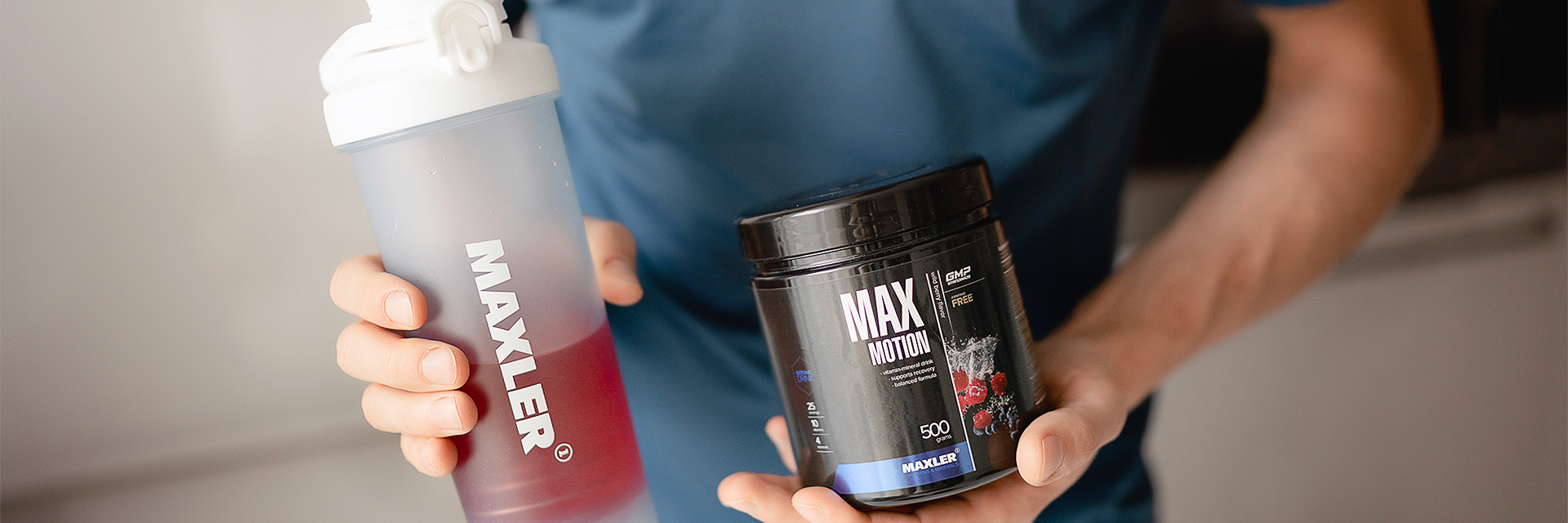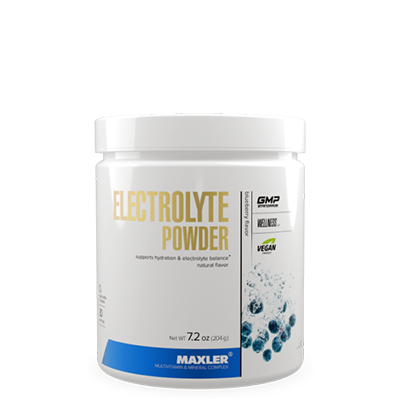Did you know that many athletes don’t know what, when and how much they should drink during training? Many of us pay close attention to our diet to maximize our performance and body composition. We spend hours searching for a new supplement that may help us get an edge over our competition. But how many of us actually think about hydration?
Sure, we all take a water bottle with us to the gym. However, many athletes still start their training sessions or competition events dehydrated. In this post, we’ll cover the ins and outs of proper hydration so you can maximize your performance.
Do you need to drink during a workout?
The short answer to this question is yes. During your workouts, the body relies on water to do multiple things, including:
- Regulate the temperature of the body
- Support proper cardiovascular function
- Allow adequate blood flow into the muscles
- Support cognition and psychological efforts
- Help with proper neuromuscular function
Losing anywhere from 2 to 4% of your body mass in water during a workout can severely impair performance. The body finds it more challenging to control temperature, especially if in a warm environment, and your skills and cognition may be affected.
Therefore, drinking enough during exercise is an essential factor that every athlete should consider.
What to drink when exercising
Figuring out what to drink during exercise can be confusing. Should you try sports drinks? Is water enough?
Water is always a great option. It is what the body needs to stay hydrated. However, there’s another crucial part to the story – sodium.
Sodium is an electrolyte or a charged mineral that we usually find in water and foods. You’ve probably heard about it in relation to your table salt, as it contains this mineral. Sodium’s job in the body is to help maintain the fluid balance and help us move things into our cells. Some other essential electrolytes include potassium, chloride, calcium, and magnesium.
In addition, our body doesn’t always absorb water very well. It all has to do with some basic chemistry.
For the body to absorb water, water has to move into the bloodstream and our tissues. It does so through a variety of ways, one of which is called a passive and osmotic gradient. This form of movement follows a simple principle – things go from an area of large to small concentration.
Simply, this means that water will go from where there’s a lot of it to where there is little of it.
Our blood has a specific concentration of water. Therefore, the best way to move water into the blood is by drinking something that has a higher water concentration. Sports drinks and electrolyte sports drinks play on this fact. Their electrolyte and carbohydrate content can alter the efficiency of water absorption. Adding multiple sources of sugars or maltodextrin to your drinks can increase water absorption, and so can electrolytes. However, the drinks need to be lower in concentration than our blood (hypotonic) or the same concentration as our blood (isotonic).
When deciding what to drink, stick to water if you’re training light or training for under 45 minutes to an hour. If you’re a heavy sweater, you’re training intensely, in heat, or for over an hour, choose a sports drink that has plenty of sodium and electrolytes.
What is the best supplement to drink during a workout?
Obviously, water is a great choice when exercising. But say you’re working out for a long time, or you’re a profuse sweater. What are the best sports drinks for hydration in that case?
The best supplements to drink during a long workout are usually electrolyte solutions. Make sure that your electrolyte solution is isotonic or hypotonic and contains plenty of sodium. Some electrolyte powders, like Maxler Electrolyte Powder, come in a convenient sachet form, so you can easily take them with you wherever.
The best sports drinks for battling dehydration and keeping you supported during a long workout are those that combine electrolytes and some sugars. Ideally, they should be isotonic and contain more than one type of sugar, as that allows the body to take up the sugars more efficiently.
Therefore, to support hydration, stick to electrolyte supplements and sports drinks with some sugars and electrolytes.
What not to drink when exercising
There are a few drink types that won’t serve you much during a workout. These include juices, as juices are high in sugar but typically lower in sodium. Save juice for a different occasion, such as your post-training snack.
Want to learn more about post-training nutrition for recovery? Check out our post.
Additionally, you’re better off putting down caffeinated drinks. This includes sports and energy drinks with added caffeine in them. Caffeine affects our water balance and acts as a diuretic, making you lose more water.
Remember, the best choice during a workout is usually water.
How much to drink during a workout
Our body’s thirst systems are great at letting you know when to drink. The general rule is to start off well-hydrated, drink regularly during your training or competition, and rehydrate soon after finishing. However, the exact timing and quantities of water or sports drinks with electrolytes to consume will depend on multiple factors.
If you’re ever in doubt about how much to drink during your workouts, approach your practitioner or your coach. They may have sport-specific recommendations for you.
What to consider
Which factors affect how much you should be drinking? It’s all about what you’re doing, how long and where you’re doing it. In addition, the last piece of the puzzle will be your unique sweat rate and water absorption capacity.
-The type of exercise
The type of exercise you do or the sport you play will affect your ability to rehydrate during a training session or match. Some sports, like soccer and racket sports, have limited times when athletes are able to take in water. Therefore, your hydration strategies will be affected by this. Practice strategies to support your water intake before a competition.
If you’re looking for more specific advice on hydration strategies for your sport, check out our nutritional plans.
For endurance exercise, aim to take in around 400-800 ml of water per hour of training. This is to avoid the risk of overhydrating.
-The length, intensity, and environment of your exercise
Most of our water losses during exercise are from sweat, so the higher your exercise intensity, the more water you’ll need to replenish. Most people are guided by their feelings of thirst; however, they can often be ineffective at helping avoid dehydration during exercise. This is especially important during longer exercise bouts, for example, endurance exercise. Therefore, it’s wise to take in a bit of additional water when you can and pay attention to rehydrating fully after training.
In addition, high-intensity exercise adds another level of challenge, as our body is unable to take in fluids as efficiently. Consistent hydration strategies during high-intensity training can help you get your body used to absorb more water during competition. In addition, starting competitions in a well-hydrated state can be beneficial.
In addition, consider the environment you’re competing or training in. Higher temperatures and humidity will require increasing water intake. Cold temperatures and altitude changes will also affect your sweat rate.
-Body needs
Ultimately, it’s important to remember that everybody is unique. Some people tend to sweat more; others tend to sweat less. Therefore, it’s important to find out what works for you specifically. In fact, a tailored hydration plan may help boost performance, so paying attention to your hydration habits is a good idea.
There are multiple ways to go about understanding your hydration needs. One of the easiest ways to do so is actually through monitoring your body mass. Weigh yourself before a workout or a training session. This will be your starting weight. After your workout or training, weigh yourself again to get your resultant weight.
You can find your water mass loss by subtracting your resultant weight from the starting weight.
Replenishing it is straightforward – for each gram you’ve lost, drink 1 milliliter of water. So, if you lost half a kilo, you’d need to drink half a liter of water.
This approach does have limitations, however. Some of the things affecting it are:
- Length of time between measures – the longer, the less reliable it becomes
- Consumption of food or fluid during training
- Sweat composition
- The body’s usage of nutrients like glycogen
Therefore, it’s a good idea to use this approach multiple times and get an average water loss value. That way, you can replenish at least your average water loss and then drink more if you need it.
Hydration is a vital aspect of sports performance, as it supports the body’s ability to perform and regulate temperature. Therefore, knowing what to drink and when is essential for every athlete. Stick to water where you can, but remember that some sports and training sessions can benefit from sports drinks. Ensure you’re starting your training well-hydrated, and don’t forget to replenish water post-exercise. Your performance is in your hands – hydrate properly to get the most out of your sessions!








